Science helps us make sense of everyday phenomena around us. It allows us to understand what is happening, why it is happening, and how it will affect us. It helps us engineer solutions to problems. Finally, it can also remind us of forces at work on Earth and in the universe way bigger than ourselves.
Science has also given the world some of the most important humans to ever live. From Aristotle to Leonardo da Vinci, Isaac Newton to Nikola Tesla, Charles Darwin to Albert Einstein, legendary people from the world of science have literally changed the world.
However, many scientists have made vast contributions to our society. Unfortunately, for one reason or another, most of us ignore these unsung heroes.
This list of 25 Super Smart Scientists You’ve Never Heard Of But Should Appreciate will help you learn of many scientists we should thank and be grateful for.
John Bardeen
 https://www.nobelprize.org/prizes/physics/1956/bardeen/biographical/
https://www.nobelprize.org/prizes/physics/1956/bardeen/biographical/ John Bardeen was an American physicist and electrical engineer. He is known for being the only person to earn a Nobel Prize in Physics twice.
The first time he won the prize was in 1956, with William Shockley and Walter Brattain, for the invention of the transistor. Sixteen years later, in 1972, he shared the same honor, this time with Leon N Cooper and John Robert Schrieffer for a fundamental theory of conventional superconductivity known as the BCS theory.
Bardeen’s developments in superconductivity are widely used in nuclear magnetic resonance spectroscopy (NMR) and medical magnetic resonance imaging (MRI).
Paul Otlet
 https://www.britannica.com/biography/Paul-Otlet
https://www.britannica.com/biography/Paul-Otlet Paul Otlet was a Belgian lawyer and author. He’s regarded by most modern scholars as the father of information science, a field he referred to as “documentation.”
Otlet was “legally to blame” for the adoption in Europe of the standard American 3×5-inch index card, used until recently in most library catalogs around the world, before it was replaced by the emergence of the online public access catalog (OPAC).
Karl Landsteiner
 https://www.nobelprize.org/prizes/medicine/1930/landsteiner/biographical/
https://www.nobelprize.org/prizes/medicine/1930/landsteiner/biographical/ Karl Landsteiner was an Austrian biologist. He is famous for inventing the categories of the human body’s different blood groups back in 1900.
With his remarkable achievement, the transfusion of blood became much less dangerous for patients. This incredible medical invention gave him the name of the “father of transfusion medicine.” In 1930, he was awarded the Nobel Prize in Medicine.
Justus von Liebig
 https://www.britannica.com/biography/Justus-Freiherr-von-Liebig
https://www.britannica.com/biography/Justus-Freiherr-von-Liebig Justus von Liebig was a German scientist who made significant contributions to agricultural and biological chemistry. He’s considered the founder of organic chemistry.
He is also known as “the father of the fertilizer industry” for his emphasis on nitrogen and trace minerals as essential plant nutrients, as well as his formulation of the law of the minimum. The latter basically describes how plant growth relies on the scarcest nutrient resource, rather than the total amount of resources available.
Fritz Haber
Fritz Haber was a German chemist awarded the Nobel Prize in Chemistry in 1918. He invented the Haber-Bosch process, an invention of great importance for the large-scale synthesis of fertilizers and explosives.
To get an idea of how important his invention was, keep in mind that half of the world’s current population food production involves this method for producing nitrogen fertilizers.
Ibn al-Haytham
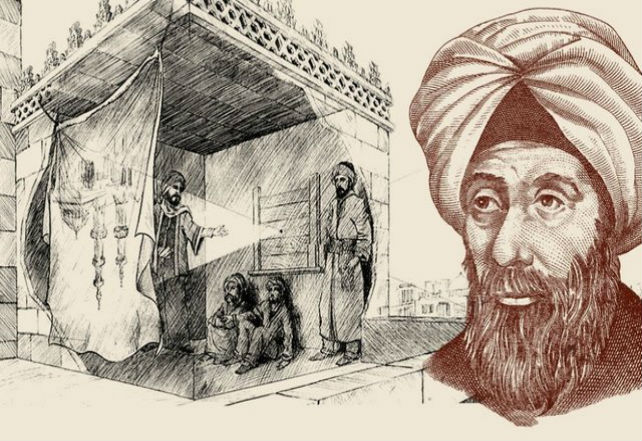 https://www.britannica.com/biography/Ibn-al-Haytham
https://www.britannica.com/biography/Ibn-al-Haytham Ḥasan Ibn al-Haytham was an Arab mathematician, astronomer, and physicist. Modern scholars often describe him as the founder of modern optics.
He was the first to explain that vision occurs when light reflects from an object and then passes to one’s eyes. He was also the first person to demonstrate through experiments how vision occurs in the brain and not in the eyes.
Enrico Fermi
Enrico Fermi was an Italian-American physicist and the creator of the world’s first nuclear reactor: the Chicago P-1. One of his most popular nicknames is the “architect of the atomic bomb.”
Fermi excelled in both theoretical and experimental physics; he specialized in anything related to the use of nuclear power. For his extraordinary contributions in the world of science, he received the Nobel Prize in Physics in 1938.
Nettie Stevens
 https://www.britannica.com/biography/Nettie-Stevens
https://www.britannica.com/biography/Nettie-Stevens Nettie Stevens was an early American geneticist who discovered the so called “sex” chromosomes. In 1905, she became the first scientist to observe that male meal-worms produced two kinds of sperm: one with a large chromosome, and one with a small chromosome.
The large chromosome fertilized eggs produced the female chromosomes, while the small chromosome fertilized eggs produced male ones.
Thanks to Stevens, we refer to these “sex” chromosomes today as the X and Y chromosomes.
Rosalind Franklin
 https://www.britannica.com/biography/Rosalind-Franklin
https://www.britannica.com/biography/Rosalind-Franklin Rosalind Elsie Franklin was an English chemist and X-ray crystallographer whose contributions set the foundations for understanding the molecular structures of DNA (deoxyribonucleic acid), RNA (ribonucleic acid), viruses, coal, and graphite.
Even though her work on coal and viruses was appreciated in her lifetime, her contributions to the discovery of the structure of DNA were recognized after her death.
Chien-Shiung Wu
 https://www.britannica.com/biography/Chien-Shiung-Wu
https://www.britannica.com/biography/Chien-Shiung-Wu Chien-Shiung Wu was a Chinese-American experimental physicist who made important contributions in the field of nuclear physics. Wu worked on the Manhattan Project, where she helped develop the process for separating uranium into uranium-235 and uranium-238 isotopes by gaseous diffusion.
She is best known for conducting the “Wu experiment,” which proved that parity is not conserved. This discovery earned her colleagues, Tsung-Dao Lee and Chen-Ning Yang, the 1957 Nobel Prize in Physics, but Wu was ignored by the Swedish academy.
Regardless, she’s considered within the circles of the scientific world as the “First Lady of Physics.”
Tim Berners-Lee
 https://www.britannica.com/biography/Tim-Berners-Lee
https://www.britannica.com/biography/Tim-Berners-Lee Tim Berners-Lee is an English engineer and computer scientist, who we should all know, celebrate, and thank on a daily basis. See, he’s the man who invented the World Wide Web.
He is also the first person to implement the communication between a Hypertext Transfer Protocol (HTTP) client and server via the Internet. Yep, you got that right; he’s the one you should thank for pretty much inventing the Internet.
Norman Borlaug
 https://www.britannica.com/biography/Norman-Borlaug
https://www.britannica.com/biography/Norman-Borlaug Norman Borlaug was an American agronomist who led initiatives worldwide that contributed to the extensive increases in agricultural production termed the Green Revolution.
Borlaug was often called “the father of the Green Revolution” and is credited with saving over a billion people worldwide from starvation, according to Jan Douglas, executive assistant to the president of the World Food Prize Foundation.
Ignaz Semmelweis
 https://www.britannica.com/biography/Ignaz-Semmelweis
https://www.britannica.com/biography/Ignaz-Semmelweis We all now know how important it is to wash our hands. In hospitals, antibiotic-resistant strains of bacteria are wiped out by the simple act of hand-washing.
The routine of “scrubbing up” by surgeons before an operation is a well-established practice. However, this was not always the case.
Until the late 1800s, surgeons did not scrub up before surgery or even wash their hands between patients, causing infections to be transferred from one patient to another. Doctors and medical students routinely moved from dissecting corpses to examining new mothers without first washing their hands, causing death by puerperal or “childbed” fever as a consequence.
Through rigorous analysis, Semmelweis figured out the problem and introduced rigorous hand-washing rules in the maternity ward. Deaths were drastically reduced and Semmelweis became known as the “savior of the mothers.”
Rachel Carson
 https://www.britannica.com/biography/Rachel-Carson
https://www.britannica.com/biography/Rachel-Carson Rachel Carson was an American marine biologist who alerted the world to the environmental impact of fertilizers and pesticides.
In the 1950s, she turned her attention to conservation, especially problems that she believed were caused by synthetic pesticides. In 1962, she published the book Silent Spring, for which she is best known around the world.
Carson died of cancer in 1964 and is remembered as an early activist who worked to preserve the world for future generations.
Emilie du Chatelet
 https://www.aps.org/publications/apsnews/200812/physicshistory.cfm
https://www.aps.org/publications/apsnews/200812/physicshistory.cfm Émilie du Châtelet, famous for being Voltaire’s mistress, was actually a talented scientist and intellectual in her own right. Overcoming challenges that kept women from becoming scientists at the time, she educated herself and carried out experiments in physics.
She was the first to translate Newton’s Principia into French. With determined effort, she achieved her goal of finishing the manuscript just before she died in September 1749.
The complete work was published ten years later, when the return of Halley’s Comet brought about a renewed interest in Newtonian mechanics.
Grace Hopper
 https://www.britannica.com/biography/Grace-Hopper
https://www.britannica.com/biography/Grace-Hopper Grace Hopper joined the U.S. Navy during World War II and was assigned to program the Mark I computer. She continued to work in computing after the war.
Perhaps her best-known contribution to computing was the invention of the compiler, the intermediate program that translates English language instructions into the language of the target computer. She said that she did this because she was lazy and hoped that “the programmer may return to being a mathematician.”
Hedy Lamarr
 https://www.theguardian.com/film/2018/mar/08/hedy-lamarr-1940s-bombshell-helped-invent-wifi-missile
https://www.theguardian.com/film/2018/mar/08/hedy-lamarr-1940s-bombshell-helped-invent-wifi-missile Born Hedwig Eva Maria Kiesler on November 9, 1914, in Vienna, Austria, Ms. Lemarr got her first leading role at the age of 17, in a German film called Geld Auf Der Straße (Gold on the Street).
She became the first actress to depict a female orgasm in film, and was mainly known for her gorgeous looks. However, her incredible scientific talents were vastly overlooked.
Lamarr invented the progenitor of wireless communication back in the 1940s, which was used as a secret wartime communication system that could keep the enemy from interfering with a ship’s torpedoes.
She got a patent for it in August 1942 and donated it to the U.S. military to help fight the Nazis.
Jocelyn Bell Burnell
 https://www.britannica.com/biography/Jocelyn-Bell-Burnell
https://www.britannica.com/biography/Jocelyn-Bell-Burnell Jocelyn Bell Burnell is a British astrophysicist and astronomer. As a research assistant, she helped build a large radio telescope and co-discovered pulsars, providing the first direct evidence for the existence of rapidly spinning neutron stars.
Despite being credited with one of the most significant scientific achievements of the 20th century and her discovery earning the award of the 1974 Nobel Prize in Physics, Bell was not one of the recipients of the prize.
This is a man’s world … unfortunately, in some cases.
Alfred Russel Wallace
Alfred Russel Wallace was a British naturalist, explorer, geographer, anthropologist, and biologist. A man with many positive attributes, without a doubt.
His research and works played a pivotal role in developing the theory of natural selection. His paper on the subject was jointly published with some of Charles Darwin’s writings in 1858. This prompted Darwin to publish his own ideas in On the Origin of Species.
It’s estimated that Wallace collected more than 100,000 insect, bird, and animal specimens, which he gave to British museums.
Ada Lovelace
 https://www.britannica.com/biography/Ada-Lovelace
https://www.britannica.com/biography/Ada-Lovelace The daughter of famed British poet Lord Byron, Augusta Ada Byron, Countess of Lovelace – better known as “Ada Lovelace” – was born in London in 1815.
She showed her gift for mathematics at an early age. She is mainly known (or she should be known) for being the first computer programmer, having written extensive notes about Charles Babbage’s Analytical Engine.
In these notes, Lovelace described his machine as a computer, with additional notes outlining software. An algorithm in the notes outlines the first of its kind tailored for use on a computer, but since Babbage’s machine was never completed, her program could not be tested.
The only certain thing is that Ada was a girl who could code. For that matter, she could code better than any man of her era.
Georgios Papanikolaou
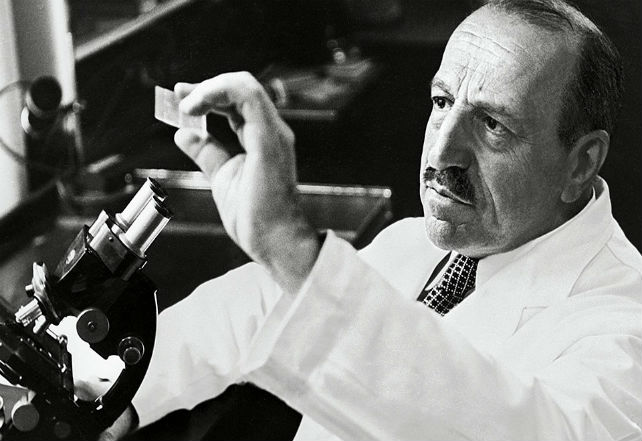 https://www.aljazeera.com/news/2019/05/georgios-papanikolaou-story-scientist-pioneer-190513053207223.html
https://www.aljazeera.com/news/2019/05/georgios-papanikolaou-story-scientist-pioneer-190513053207223.html Georgios Papanikolaou was a Greek pioneer in cytopathology and early cancer detection. He invented the Pap smear test, which has saved the lives of millions of women.
Papanicolaou was the first to realize that uterine cancer cells could be detected in vaginal smears in 1928, but his research and work were not widely appreciated until the late 1940s.
In the 1960s, he was invited to the University of Miami to lead and develop the Papanicolaou Cancer Research Institute. Strangely, he didn’t earn a Nobel Prize for his unique contributions to the world of medicine.
Konstantin Tsiolkovsky
 https://www.britannica.com/biography/Konstantin-Eduardovich-Tsiolkovsky
https://www.britannica.com/biography/Konstantin-Eduardovich-Tsiolkovsky Konstantin Tsiolkovsky was a Soviet rocket scientist and pioneer of the astronautic theory. He is considered one of the founding fathers of modern rocketry and astronautics.
His contributions played a very important role in the success of the Soviet space program. Interestingly, Tsiolkovsky believed that he developed the theory of rocketry only as a supplement to philosophical research on the subject.
Lise Meitner
 https://www.britannica.com/biography/Lise-Meitner
https://www.britannica.com/biography/Lise-Meitner Lise Meitner was an Austrian-Swedish physicist who worked on radioactivity and nuclear physics. Her research into nuclear fission helped pioneer nuclear reactors in the generation of electricity.
She was the first woman to become a full professor of physics in Germany, but she lost this position in the 1930s because of the anti-Jewish Nuremberg Laws of Nazi Germany.
She was nominated 19 times for the Nobel Prize in Chemistry and 29 times for the Nobel Prize in Physics but, unfortunately, she never received the honor.
Emmy Noether
 https://www.britannica.com/biography/Emmy-Noether
https://www.britannica.com/biography/Emmy-Noether Emmy Noether was a German mathematician who made significant contributions to abstract algebra and theoretical physics. As one of the most prominent mathematicians of her time, she developed the theories of rings, fields, and algebras.
In physics, Noether’s theorem explained the connection between symmetry and conservation laws. She was described by Albert Einstein and other decorated scientists as the most important woman in the history of mathematics.
Joseph Lister
Joseph Lister was a British surgeon and a pioneer of antiseptic surgery. He was a fond advocate of the idea of sterile surgery. Lister efficiently established the use of carbolic acid to sterilize surgical instruments and clean wounds.
He used Louis Pasteur’s breakthrough microbiology to support the use of carbolic acid as an antiseptic, which subsequently became the first widely used antiseptic in surgery.
Lister’s hygiene practices in post-operative surgery provided a much safer environment for patients, establishing him as the father of modern surgery.



























